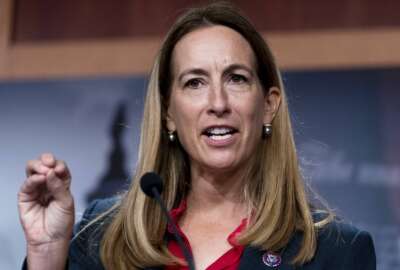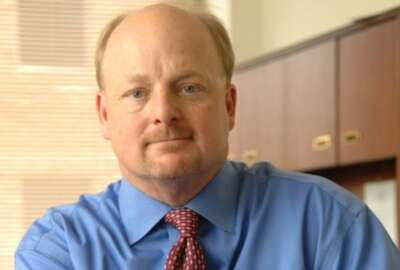EPA’s Norton builds online tools to help public protect watersheds
For two decades, Douglas James Norton, senior environmental scientist in the Environmental Protection Agency's Watershed Branch, has been spearheading projects to...

For two decades, Douglas James Norton, senior environmental scientist in the Environmental Protection Agency’s Watershed Branch, has been spearheading projects to help maintain the health of America’s rivers, streams and lakes.
Recently, Norton helped launch How’s My Waterway, a website that allows the public to access data concerning the health of their local watersheds.
“We were struggling to increase the public’s awareness of the status of their local waterways, and with the advent of computer and smartphone apps, we started thinking about opportunities to get this information in front of folks,” said John Goodin, chief of EPA’s watershed branch. “Doug grabbed hold of this concept and really was the driver behind connecting all of the right people to make this work.”
In addition, Norton developed EPA’s online platform, Watershed Academy, which offers training and webcasts featuring watershed experts. He also created the Recovery Potential Screening website, where watersheds can be systematically compared in order to identify their differences and determine their potential for restoration.
For his ongoing commitment to championing the nation’s watersheds, the Partnership for Public Service recently named Norton as one of the finalists for the 2014 Citizens Cervices Medal. The award recognizes federal employees who have made important contributions in the area of citizens services. This includes economic development, health care, education, housing, labor and transportation.
Getting to know Doug Norton
Federal News Radio asked each of the Sammies finalists five questions about themselves. Here are Norton’s responses:
What three words best describe your leadership philosophy?
As one of the very few Sammies finalists in a technical staff position, I’m tempted to say “I’m not management.” But seriously, I do lead many technical teams and in that role my philosophy is “Meet needs completely.” This simple approach ripples through everything — starting with the best desired final outcome as a goal, assembling the best team, motivating and communicating with everyone for best results, ensuring quality work and drawing in the public customers along the way to keep us all on track.
What’s the best piece of advice (or words of wisdom) you’ve ever received and who gave it to you?
That’s easy. It would have to be “Marry her!” and I heard it from several of my closest friends regarding my wife Sue. She’s a fabulous person and an accomplished scientist in her own right. Actually, we talk shop at home way too much, and both love it anyway. Regardless of anything I’ve ever done or will do in my career, the best thing I’ve ever done is spend my life with her. Among so many other things, she’s my Exhibit A that a balanced and supportive life outside of work is an essential part of reaching one’s full potential in your career as well.
Who is your greatest role model and why?
I really can’t point to just one individual. I admire bits and pieces of hundreds of people I’ve known, so I guess my role model is a composite of many, many people. This includes traits from my parents and other family members, great friends and coworkers, mostly non-famous people. Among public figures, I admire Sen. Bernie Sanders (I-Vt.) for keeping his actions consistent with his values. Also, after years of working with lake and stream restoration programs individually in many, very different states, I appreciate former Chief Justice Louis Brandeis for his belief that states are “laboratories of democracy.”
What’s the last thing you read and what’s next on your reading list?
I recently finished “The Founding Fish” by John McPhee. It’s an amazing account of the unsung role of American Shad in our country’s history, when food from the natural environment played a much more crucial role in people’s survival and growing our young nation. It’s far too easy in current times to miss that ultimate dependency and reliance we all still have on an environment that can sustain us. As for what’s next, I’m in the middle of “Fishless Days, Angling Nights” by Sparse Grey Hackle … seeing a pattern here, perhaps?
What would be the title of your autobiography and why?
It would have to be “How Much Fun Can One Man Have?” which is my favorite saying when something really great is happening. Coming from a borderline workaholic, that title might come as a surprise. But when you love what you do for your job, and you find it morally fulfilling, and you’re enjoying yourself outside of work as well, how could things be any better than that? I mean, really, how much fun can one man have?
The Citizen Services Medal is just one of the Samuel J. Heyman Service to America Medals (Sammies) presented annually by the Partnership for Public Service. View a photo gallery of all the Sammies nominees.
Copyright © 2025 Federal News Network. All rights reserved. This website is not intended for users located within the European Economic Area.





